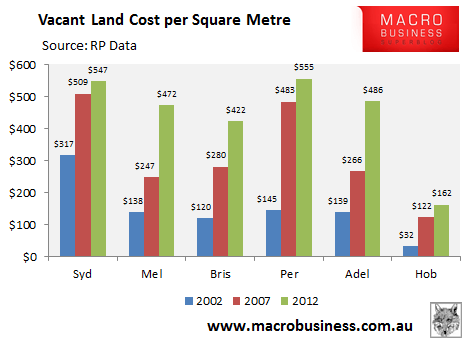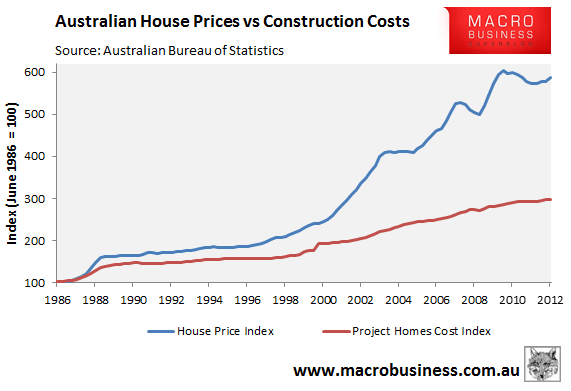
In Wayne Swan’s weekly economic note, published yesterday, he reiterated the Treasury’s/RBA’s expectation that the non-mining economy (read housing construction) would fill the void left as the mining investment boom unwinds:
We see evidence all the time that Australia’s economy is currently undergoing some substantial transitions…
These challenges were underscored on various fronts last week… Take for example the report from the Bureau of Resources and Energy Economics (BREE) which points to the transition underway in our resources sector, from the investment phase towards the production and export phase…
We’ll… be looking for non-mining industries to play a greater role driving growth as the mining boom evolves.
The Treasurer’s comments have drawn a stark warning from the Construction and Property Services Industry Skills Council, who claims that the planned housing construction rebound could be thwarted by a looming skills shortgage of up to 45,000 workers over the next three years. From the AFR:
The construction and property services industry – the economy’s third-biggest employer – faces a skills shortage of 45,000 workers in the next three years because of a forecast rebound in residential building.
Employment across the sector is expected to grow by 1.5 per cent a year through to 2016, faster than overall jobs growth, but it could be higher if the government removes barriers to construction…
The council, whose membership includes industry and unions, will on Monday release modelling by the Centre for International Economics that predicts strong population growth and low interest rates will spur demand for about 164,000 homes a year through to the middle of the next decade.
The council will call on governments to cut regulatory compliance costs, enhance labour market productivity and abolish inefficient taxes that weigh on the industry.
With all due respect, the Council’s concerns over a looming skills shortage are likely to be alleviated by the slowdown in mining-related capital expenditure, which should free-up a large number of construction workers and engineers, many of whom will then be available to shift into housing construction. Unemployment in these areas is a far greater risk than skills shortages.
While there is merit in reducing compliance costs, inefficient taxes and speeding-up planning approval processes around new housing developments, the Construction and Property Services Industry Skills Council’s warning once again misses the key barrier to a rebound in housing construction levels: Australia’s extortionate vacant land prices. It is inflated land prices that are pricing new homes above what most buyers can afford or are willing to pay, not dwelling construction costs (see below charts). Therefore, policies aimed at boosting construction should be focused primarily on lowering land prices.


In short, if the Council wants to ensure that housing construction accelerates from current depressed levels, it should first lobby to remove the multitude of barriers preventing affordable residential lots from being supplied to the market. All other issues are of secondary importance.

